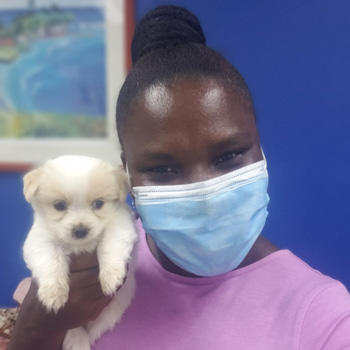Everyone is passionate about something. Ric Berlinski’s passion is just a little more dangerous than most.
We’re talking shoulder-broken-by-a-kicking-rhino, leg-and-ribs-broken-by-an-emu, tooth-chipped-by-a- wallaby, hand-bitten-by-a-lion-type dangerous. And that’s just his day job. We haven’t even gotten into the really dangerous stuff yet.
“A lot of people think I’m crazy,” says the 2003 Ross Vet graduate.
That may be true, but his day job is actually something lot of kids have crazy dreams of becoming: he’s been a veterinarian at a number of zoos. Of course, most kids don’t realize just all that goes into being a zoo vet.
“I mean, complacency in my job will get you killed,” Berluinski admits. “But I wouldn’t trade a day of it. I have a chance to make a difference with my career.”
That “chance to make a difference” part has a dual meaning.
On one hand, Berlinski has had opportunities to work with endangered species, especially during his time at the Toledo Zoo, even getting to be a part of various research projects, such as reintroducing some small Tanzanian frogs to the wild after having been extinct for more than 20 years.
The other part is where the really dangerous stuff comes in. You see, Berlinski has a passion for big cats. Lions, leopards, tigers – he’s long been amazed by them. “They’re liquid power,” Berlinski prides.
He got his first taste of them while working with an amur leopard at the Potowatami Zoo in South Bend, Ind. He’s been fascinated ever since.
That fascination took a serious turn in 2014. While attending an AZA Felid Taxon Advisory Group conference, he was approached by a group, Panthera, wanting to see if he’d be interested in him joining them on a research expedition.
“They were going to the Tien Shen Mountains in Southeastern Kyrgyzstan to track snow leopards,” says Berlinski, who had experience as rock climber and outdoorsman. “Obviously, I couldn’t pass it up.
“Of course, everyone thinks it’s amazing until you realize the conditions.”
For five weeks, “home” was a base camp at 10,500 feet. They’d hike as high as 13,700 feet, and they’d often do it braving freezing temperatures. Yet, on that trip has was able to join a pretty exclusive club; he was able to place his hands on a live snow leopard in the wild.
“There’s probably less than 250 people in the world who can say they’ve gotten to do that,” Berlinski said. “I’ll admit, I broke down in tears that first time.”
Note, he said “first time.” Berlinski has actually had his hands on five snow leopards now thanks to repeated trips back to the area. He says each time it’s truly a humbling and special experience, especially when you realize all he puts himself through to do it; nearly losing a finger on one trip and nearly freezing to death on another.
Yet, nothing will stop him from going back, as he’s already planning another trip to the mountains, and he’s even expanding, looking into researching jaguars in the jungles of southern Mexico.
“I’ve always dreamed of doing conservation work, and zoo and wildlife medicine,” Berlinski said. “I’m living that dream.”







